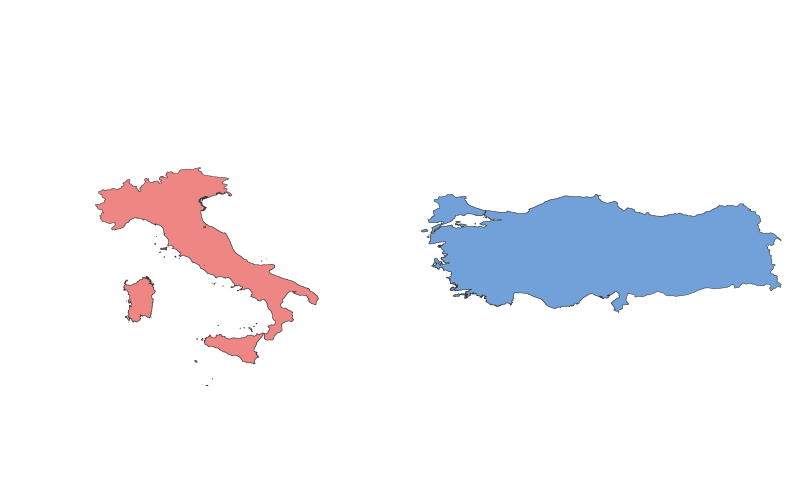Italy vs. Turkey: A Geographical Comparison

Comparative Overview
| Category | Italy | Turkey |
|---|---|---|
| Location | Southern Europe, Mediterranean basin | Transcontinental (Europe & Asia), borders Mediterranean, Black Sea |
| Size | 301,340 km² | 783,356 km² |
| Climate | Mediterranean (temperate winters, hot summers); Alpine in north | Diverse: Mediterranean (coastal), continental (interior), arid (east) |
| Natural Resources | Natural gas, marble, mercury, potash | Coal, chromium, copper, hydropower |
| Urban Development | High urbanization (Rome, Milan); historic city centers | Rapid urbanization (Istanbul, Ankara); mix of modern and historic |
| Transportation | Extensive rail/road networks; major ports (Genoa, Naples) | Strategic bridges (Bosphorus); growing rail/air infrastructure |
Description of Italy and Turkey
Italy
Italy, a peninsula in Southern Europe, is renowned for its rich history, cultural heritage, and economic influence. Home to the Roman Empire and the Renaissance, it boasts iconic cities like Rome, Florence, and Venice. Its economy is diversified, with strengths in manufacturing (luxury goods, automobiles) and tourism. Geographically, Italy features the Alps in the north, fertile Po Valley, and volcanic activity (Vesuvius, Etna). The Mediterranean climate supports agriculture (olives, wine).
Turkey
Turkey straddles Europe and Asia, with Istanbul as its cultural and economic hub. Historically the center of the Ottoman Empire, it blends Eastern and Western influences. The economy is driven by textiles, automotive exports, and tourism (e.g., Cappadocia, coastal resorts). Geographically, it includes arid plateaus (Anatolia), mountainous regions (Taurus), and fertile coastal plains. Its strategic location controls key trade routes (Bosphorus Strait).
Both nations share Mediterranean coastlines but differ in scale, cultural legacy, and economic focus, making them fascinating subjects for comparison.